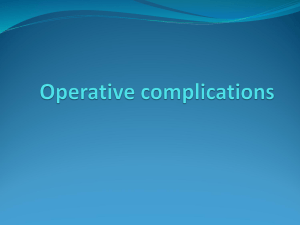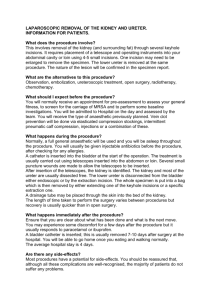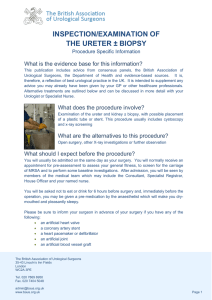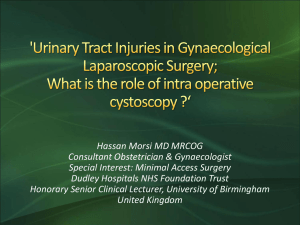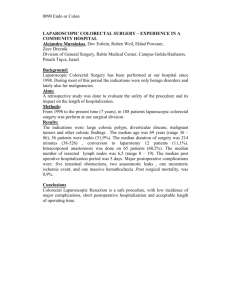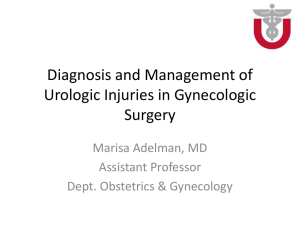Laparoscopic ureteral reimplantation with extracorporeal tailoring for
advertisement
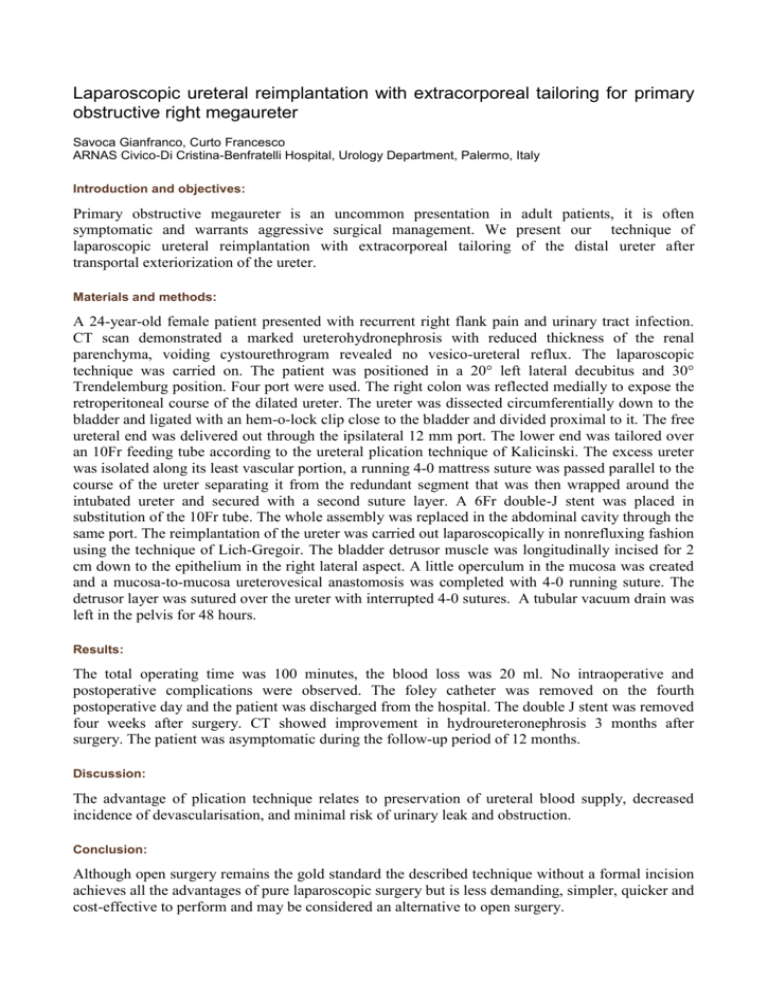
Laparoscopic ureteral reimplantation with extracorporeal tailoring for primary obstructive right megaureter Savoca Gianfranco, Curto Francesco ARNAS Civico-Di Cristina-Benfratelli Hospital, Urology Department, Palermo, Italy Introduction and objectives: Primary obstructive megaureter is an uncommon presentation in adult patients, it is often symptomatic and warrants aggressive surgical management. We present our technique of laparoscopic ureteral reimplantation with extracorporeal tailoring of the distal ureter after transportal exteriorization of the ureter. Materials and methods: A 24-year-old female patient presented with recurrent right flank pain and urinary tract infection. CT scan demonstrated a marked ureterohydronephrosis with reduced thickness of the renal parenchyma, voiding cystourethrogram revealed no vesico-ureteral reflux. The laparoscopic technique was carried on. The patient was positioned in a 20° left lateral decubitus and 30° Trendelemburg position. Four port were used. The right colon was reflected medially to expose the retroperitoneal course of the dilated ureter. The ureter was dissected circumferentially down to the bladder and ligated with an hem-o-lock clip close to the bladder and divided proximal to it. The free ureteral end was delivered out through the ipsilateral 12 mm port. The lower end was tailored over an 10Fr feeding tube according to the ureteral plication technique of Kalicinski. The excess ureter was isolated along its least vascular portion, a running 4-0 mattress suture was passed parallel to the course of the ureter separating it from the redundant segment that was then wrapped around the intubated ureter and secured with a second suture layer. A 6Fr double-J stent was placed in substitution of the 10Fr tube. The whole assembly was replaced in the abdominal cavity through the same port. The reimplantation of the ureter was carried out laparoscopically in nonrefluxing fashion using the technique of Lich-Gregoir. The bladder detrusor muscle was longitudinally incised for 2 cm down to the epithelium in the right lateral aspect. A little operculum in the mucosa was created and a mucosa-to-mucosa ureterovesical anastomosis was completed with 4-0 running suture. The detrusor layer was sutured over the ureter with interrupted 4-0 sutures. A tubular vacuum drain was left in the pelvis for 48 hours. Results: The total operating time was 100 minutes, the blood loss was 20 ml. No intraoperative and postoperative complications were observed. The foley catheter was removed on the fourth postoperative day and the patient was discharged from the hospital. The double J stent was removed four weeks after surgery. CT showed improvement in hydroureteronephrosis 3 months after surgery. The patient was asymptomatic during the follow-up period of 12 months. Discussion: The advantage of plication technique relates to preservation of ureteral blood supply, decreased incidence of devascularisation, and minimal risk of urinary leak and obstruction. Conclusion: Although open surgery remains the gold standard the described technique without a formal incision achieves all the advantages of pure laparoscopic surgery but is less demanding, simpler, quicker and cost-effective to perform and may be considered an alternative to open surgery.

